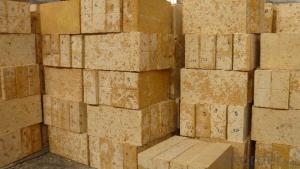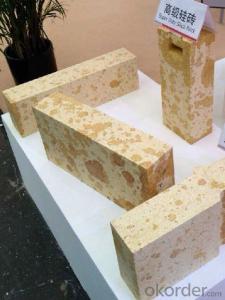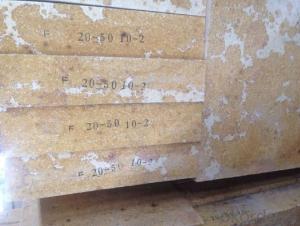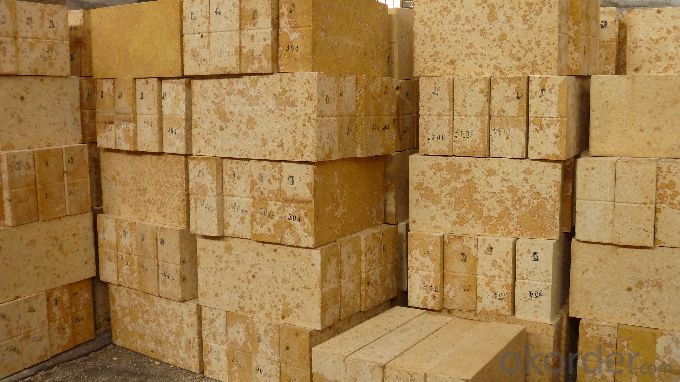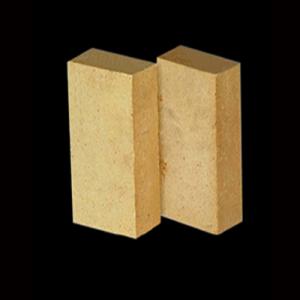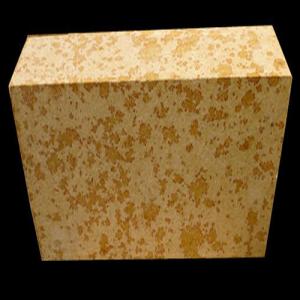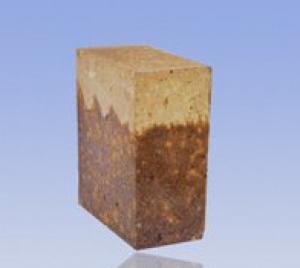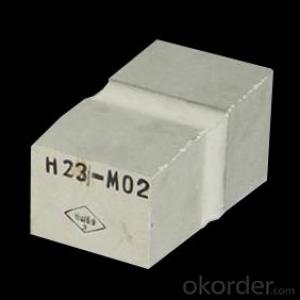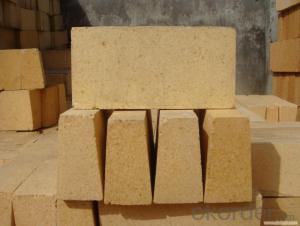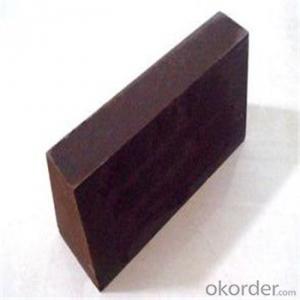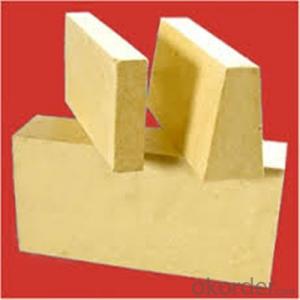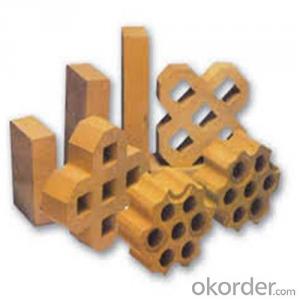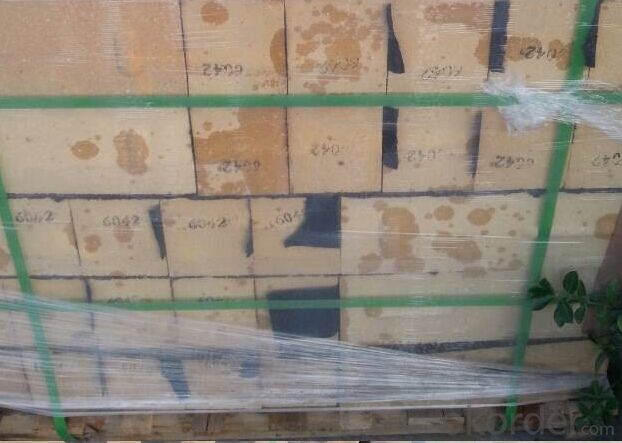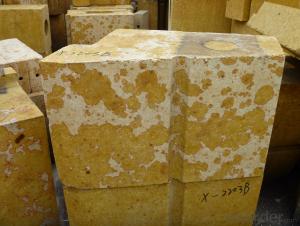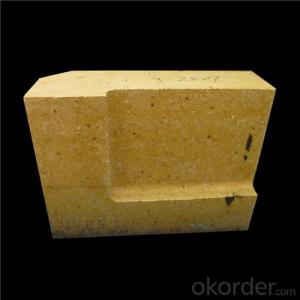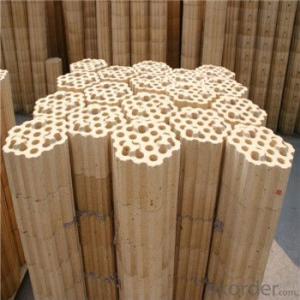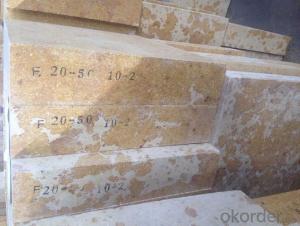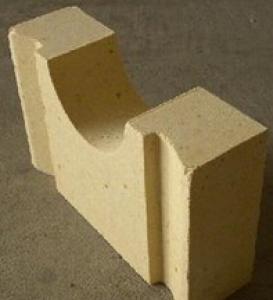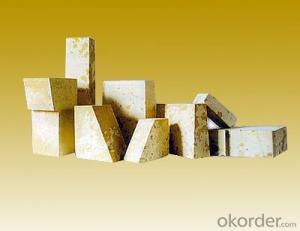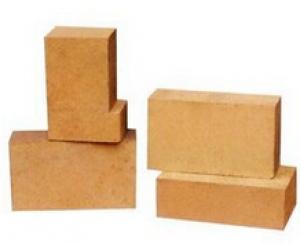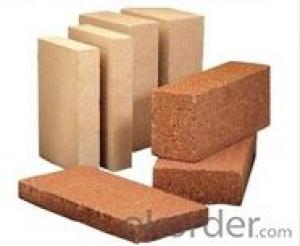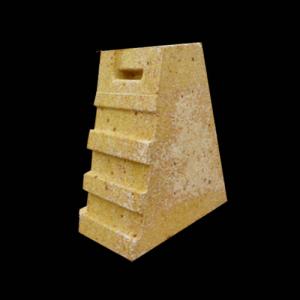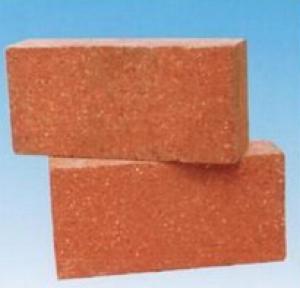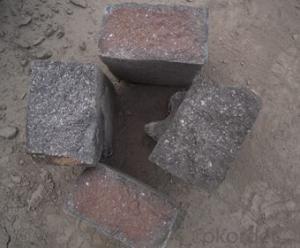Silica Bricks Price for Ceramic Kiln Application
- Loading Port:
- Shanghai
- Payment Terms:
- TT OR LC
- Min Order Qty:
- 15 pallet
- Supply Capability:
- 30000 pallet/month
OKorder Service Pledge
OKorder Financial Service
You Might Also Like
General Information
Ceramic firing kiln refractory Silica Brick Description:
Refractory Silica Brick is mainly made of top class silica, via shaping and burning under the high temperature,
Possesses high temperature resistant, high strength and low impurities, etc.
It is mainly used for blast furnaces and hot blast stove.
Features
Ceramic firing kiln refractory Silica Brick Advantage:
1) Silicon oxide is above 95%.
2) Good acid erosion resistance.
3) High softening point
Applications:
Light weight silica bricks are primarily used for furnaces and kilns in metallurgy, steel, power, chemical industry, and electric power and machine building etc areas
Ceramic firing kiln refractory Silica Brick specifications:
Product | AZM-1550 | AZM-1650 | AZM-1680 | |
Index | Index | Index | Index | |
chemical composition | SiC+SiO2 | ≥35 | ≥30 | ≥32 |
Al2O3 | ≥60 | ≥65 | ≥65 | |
Bulk Density(g/cm3) | ≥2.55 | ≥2.65 | ≥2.70 | |
Apparent Porosity (%) | ≤20 | ≤19 | ≤19 | |
Cold Crushing Strength(Mpa) | ≥80 | ≥90 | ≥100 | |
Refractoriness Under Load | ≥1550 | ≥1650 | ≥1680 | |
Thermal Shock Resistance | ≥10 | ≥15 | ≥20 | |
- Q: Because of the recent relates to this industry, by way of learning to name for all raw materials, I hope knowledgeable friends exhibitions, thank you.
- Classification of chemical components of refractory materialsAccording to the chemical characteristics of refractory raw materials can be divided into acidic refractory materials, such as silica, zircon etc.; neutral refractory raw material, such as corundum, bauxite, mullite (acidic) (acidic), Ge (alkaline) iron and graphite; alkaline refractory materials, such as magnesite, dolomite, magnesium sand calcium sand.
- Q: Why will expand when heated brick
- After high temperature after the formation of tridymite and cristobalite and quartz and a small amount of residual glass phase, quartz heating to 220-240 DEG C, in a certain degree of thermal expansion, brick maximum expansion occurs in 100~300 DEG C, 300 expansion before the total amount of expansion is about 70%~75%.
- Q: What is the effect of the content of silicon nitride in silicon nitride bonded silicon carbide brick on the use of electrobath? Thank you
- The main damage of silicon carbide side wall brick is stress damage, not chemical erosion. Chemical damage is formed prior to the formation of the groove, and the damage to the chemical erosion is little after the formation of the groove.
- Q: The introduction of silica brick
- An acid refractory consisting mainly of quartz and square quartz and a small amount of residual quartz and glass.More than 94% silica content. True density 2.35g/cm3. With acid resistance, slag erosion performance. Higher high temperature strength. The softening start temperature is 1620~1670 degrees. Long term use at high temperature without deformation. The thermal shock resistance is low (the heat exchange in water is 1~4 times). The natural silica is used as the raw material, and a proper amount of mineralizer is used to promote the transformation of quartz into quartz in the body. Slowly sintered at 1350~1430 DEG C in the reducing atmosphere. When heating up to 1450 degrees, the total volume of 1.5~2.2% expands, and the residual expansion can close the kerf and ensure the airtight and structural strength of the masonry.
- Q: The difference between clay refractory bricks and refractory brick in the application.
- Clay brick features good thermal shock resistance and low price, but high temperature performance is not well integrated, and the long-term use temperature is not higher than 1300 degrees. It is widely used in low temperature parts of various kilns.
- Q: What is the main material of silica brickIt's common, the kind we see so often!
- More than 94% silica content. True density 2.35g/cm3. With acid resistance, slag erosion performance.
- Q: How much is the highest melting point of silicon?
- Mainly used for partition, carbonization chamber of coke oven and combustion chamber open hearth furnace regenerator and a sediment chamber, soaking furnace, glass melting furnace refractories and ceramic kiln, kiln vault and other load-bearing parts. Also used for high temperature bearing part of hot blast stove and acid open hearth furnace
- Q: What role does silica play in refractories?
- The natural mineral of silica is called quartz. In refractories, silica and siliceous refractory materials contain more silica. Silica is acidic at high temperature, and siliceous refractory can resist acid slag corrosion
- Q: The brick is mainly used in the place?
- Partitions used in coking and combustion chambers for coke ovens
- Q: The high thermal conductivity of silica brick and traditional brick what is the difference?
- Tridymite content high thermal conductivity silica brick is 70%, tridymite content of traditional brick is 60%, tridymite content high thermal conductivity of silica brick than tridymite high content of 10% traditional brick,
Send your message to us
Silica Bricks Price for Ceramic Kiln Application
- Loading Port:
- Shanghai
- Payment Terms:
- TT OR LC
- Min Order Qty:
- 15 pallet
- Supply Capability:
- 30000 pallet/month
OKorder Service Pledge
OKorder Financial Service
Similar products
Hot products
Hot Searches
Related keywords
